.
Maine Coast Double Ender
Esmeralda
18'-0" x 6'-0" x 1'-8"
.
Virtually all boat designs are based on something earlier–in this case the double enders that plied Maine's inshore coastal waters since the middle of the 1800s. This design is based on our own Matinicus Double Ender and a Jonesporter recorded back in the 50s by Chapelle.
Esmeralda was designed for a client who rightly considers double enders to be superb inshore craft, and who wanted a boat that would not only be fun to use for brief fishing excursions, but also for extended single-handed coastwise cruising.
Think this looks like the model?
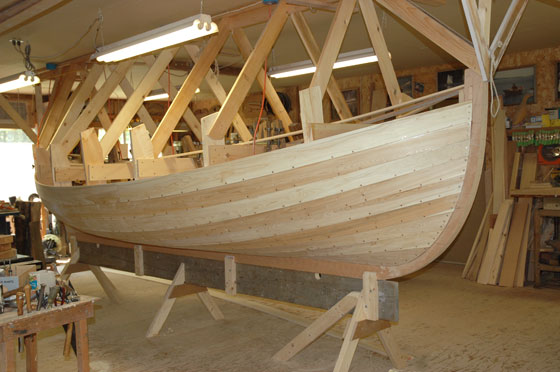
How about this one?

A builder's half model for a boat with a vertical keel extends to the rabbet, so would not normally include the stem, keel, and sternpost. This model doesn't either–those details were added to the backing board to give her owner a better feel for the hull. So as not to carve right down to nothing at the ends, 3/32" was added to the back of the model. For that reason, rather than being coincident with the backing as is usually the case, the centerline is 3/32" away from the backing board–the same thickness as the added backbone pieces.
The model itself has basswood topsides, butternut below the waterline, and a black walnut boottop. It is carved to 1-1/2" = 1'-0" scale.

Her profile view shows her strong sheer and a bow raised to help keep her drier while under sail.

Here you can see that her load waterline actually exhibits a bit of a hollow forward but that she fills out rapidly and carries her fullness well aft, giving her plenty of bearing.
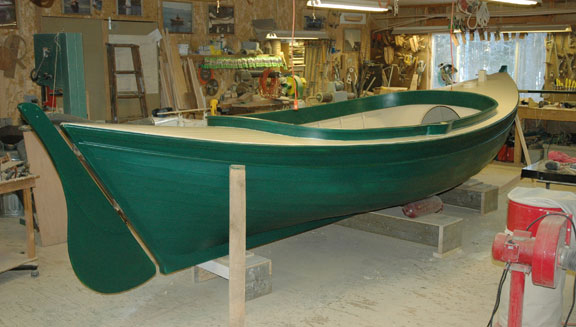
The quartering view is is always a good one for evaluating the run of the sheer.
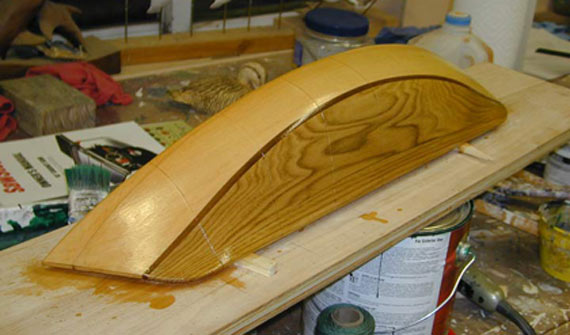
Her run aft is critical to the evaluation of her handling characteristics under press of sail. Her midship sections testify that she will stand up to a good breeze, and her underwater sections say that she won't be dragging a heavy wake.
Her original sail plan called for about 95 square feet of sail divided between a main and an offset riding sail. Her main is a spritsail with battens and a boom. As we got into it further, it became apparent that she could easily carry more sail. Her revised sail plan includes a 100 square foot main and a 20 square foot riding sail set on the hull centerline. Gambell & Hunter have since completed them.
The lines have since been taken off the model, a tentative table of offsets compiled, and she was lofted using those offsets. Her model is fair in every direction, but when enlarging anything by a factor of eight, even slight imperfections become pronounced. It is the function of the lofting to find any such anomolies and provide the necessary corrections. The final table of offsets has beenadjusted accordingly.
She's essentially completed now. Of course we can't show you her rig until we get her moved outside. In the meantime, here are a couple of inboard shots...

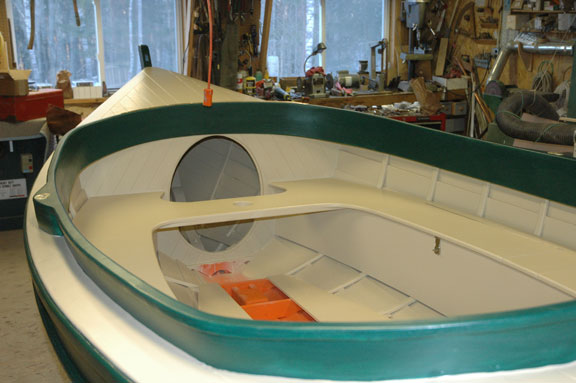
Those compartments fore and aft are watertight, so the oval hatches lock in place solidly. Further storage is provided in the side benches
Lines, Lofting, and Half Models was written to detail this process, and begins, as we did with this design, by carving a model. We always design using half models because nothing else gives you a better feel for the proposed hull than a three-dimensional model that you can hold in your hands and view from any angle. Even if you have no intention of designing a boat, it is the best way to familiarize yourself with a boat you are about to build from plans.
This is one large 18-footer, so we'll close with this shot to give you an idea of the actual scale...
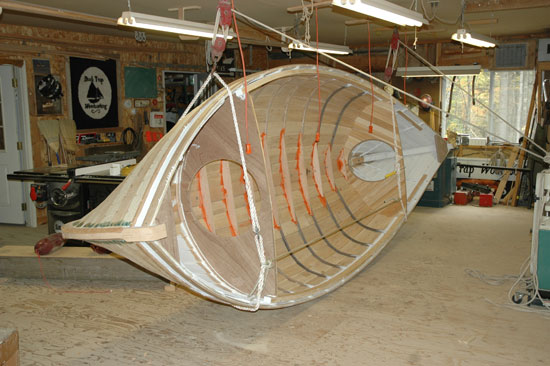
Questions?
If so, give us a call at 207-789-5363, or email us.
Return to Home Page
© 2012 Duck Trap Woodworking
